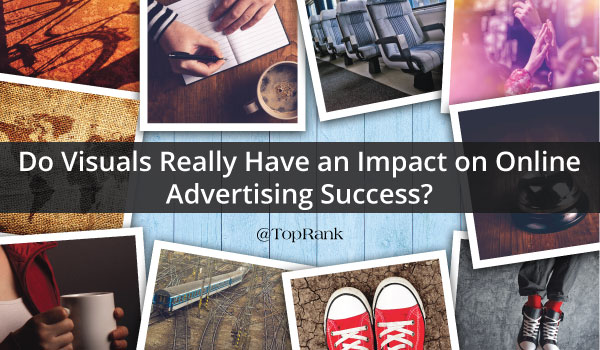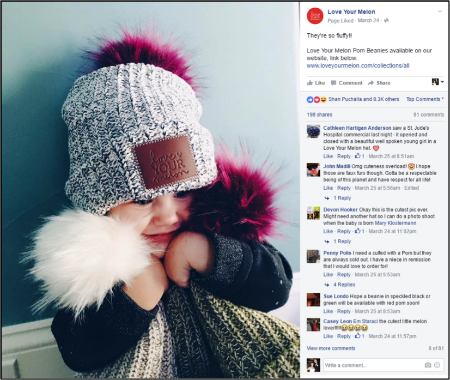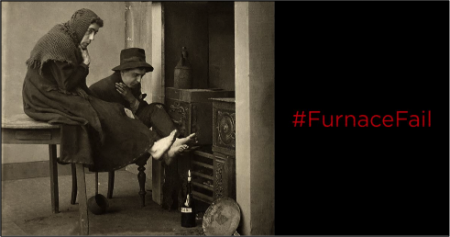
Humans are visual creatures by nature. In fact, research shows that 90% of the information that comes to our brains is visual. And as it turns out, our visual intelligence is actually increasing while verbal intelligence is on the decline, according to an infographic from WebDAM.
What does this mean? It means that the way people consume information and the way they communicate is changing. And marketers who want to effectively reach their audiences will need to more strategic with visuals in all their marketing tactics—including online advertising. Simply paying to be at the top of search results or news feeds is no longer enough to get the results you’re looking for.
But the importance of visual content in your online advertisements goes beyond the fact that we’re becoming an increasingly visual as a society. Below we dive into some other reasons visual content should be a focus and outline some best practices, too.
Why Visuals Matter in Online Advertising
Images Impact How People Feel
It’s true what they say. A picture truly is worth a thousand words. Images have the power to move us, and to evoke feelings and memories. And in advertisements, images can definitely impact the way we feel about a product or brand. In fact, when it comes to ecommerce sites, 67% of consumers say the quality of a product image is “very important” in selecting and purchasing an item.
One of my favorite brands using visual content to give people all of the feels is Love Your Melon. Love Your Melon was founded to improve the lives of children battling cancer by providing them with a special hat. With each hat purchased by the public, 50% of the net proceeds are donated to the organization’s nonprofit partners in the fight against childhood cancer. Throughout the year the brand releases new products and boosted/sponsored Facebook posts are a major promotion tool. And at the center of it all is an awesome image that encompasses the brand’s mission and the good they’re doing for sick kids.

Of course, I also have to mention Chevrolet’s tribute to the late, great Prince Rogers Nelson following his death on April 21, 2016. Most people first saw it on Twitter, but the company also ran the ad in several newspapers.

Visual Content is More Engaging
Visual content is engaging and eye-catching by nature. Videos and images can get us to stop, look and watch. How many times have you found yourself watching one of BuzzFeed’s Tasty videos in your Facebook news feed this week? In addition, visual content often compels us to share with others. According to a Buffer infographic, visual content is 40 times more likely to be shared on social networks.
General Mills recently released a cute video ad on Facebook featuring the “honorary real Trix rabbit” to let the world know that the company’s cereals all contain real stuff. The ad delivers information in a visually delightful way and uses the memorable Trix campaign slogan to remind people General Mills was part of their childhood.
Visual Content Rules the People
In today’s digital world, mobile devices have put a camera in people’s pockets and the ability to share the photos they take in real-time. According to the Mary Meeker’s 2015 Internet Trends Report, people uploaded 1.8 billion photos every single day in 2014. That same report indicated that 44% of millennials use the camera or video function of their smartphones at least once a day. In addition, visual social media platforms such as Snapchat, Instagram and Pinterest are on the rise—especially among young people. And of course, YouTube has been a growing go-to for people for the last few years.
Best Practices
- Be thoughtful. Just like any digital marketing tactic, thinking about who your audience is, what they need and the message you’re trying to spread is essential when choosing what visuals to use.
- Be consistent. Your visual content should be representative of your brand and be consistent across all of your digital channels. (Read: Learn How to Create a Better Customer Experience with Omni-Channel Marketing)
- Show your audience something special. Give them a sneak peek at a product launch or a behind-the-scenes video story. This type of visual content can pique interest and help spread awareness about your brand, rather than trying to sell a product or service outright.
- Use real images. Real images resonate with people. As an example, the following two ad images were used to advertise a furnace inspection promotion on Facebook. The ad featuring a real image and humorous hashtag received a 22% higher click-through rate, than the illustrated melting snowman ad.


- Illustrate your message. Ask yourself: How can I convey what my message is through an image? Once you’ve picked an image that can deliver your message, make sure any text supports the overall message.
- Show them the product. Sometimes just simply using an image of your product is all your need to do. For example, if you are advertising a new software, provide a snapshot of the backend that shows its capabilities or features rather than a jovial person sitting at a computer. How-to videos can also be incredibly impactful.
- Don’t be too busy. Make sure your images don’t have too much going on. Humans are easily distracted and you want to keep their attention.
- Think mobile. It’s no secret that mobile devices are overtaking desktop computers. Make sure that your visual ad content will load quickly and can be easily seen on mobile.
- Size images to proper dimensions. Make sure your images are properly sized for the advertising medium, otherwise they could be cropped and cause your ad to look unprofessional. And people will move on without a second thought. (Also, proper image size is important for your social media profiles and updates, too. Check out HubSpot’s ultimate cheat sheet for social media sizing guidelines.)
- Take advantage of free tools. You don’t have to be a graphic designer to pull off high-quality ad images. Canva, Pixler and PicMonkey are awesome and all offer free versions.
- Use color. Colors are more likely to grab and hold your audience’s attention. Research from Xerox shows that colored visuals increase readers’ recall and attention spans by 82%.
- Don’t be afraid to test. Use a couple different images in your ads so you can see which type or style better resonates with your audience.
What is one of the most visually compelling online ads that you’ve seen recently? Why did it resonate with you? Tell us in the comments section below.
Header image via Shutterstock


